Journals
Journals and Conference Papers
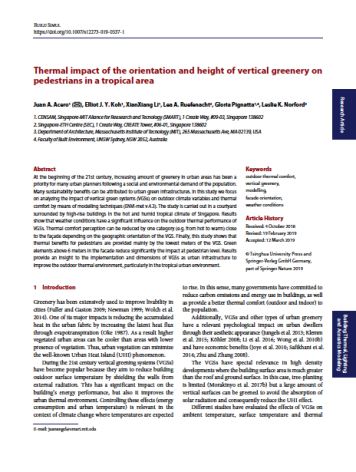
The results of this paper provide an insight to the implementation and dimensions of vertical green systems (VGSs) as urban infrastructure to improve the outdoor thermal environment, particularly in the tropical urban environment.
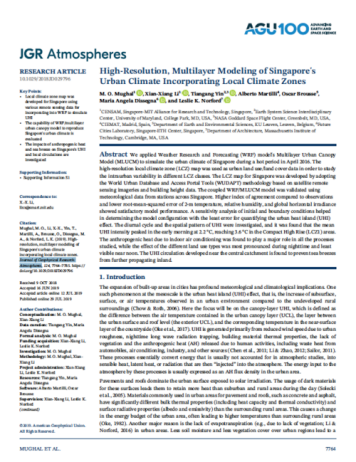
This paper describes the application of the Weather Research and Forecasting (WRF) model's Multilayer Urban Canopy Model (MLUCM) to simulate the urban climate of Singapore during a hot period in April 2016. The LCZ map for Singapore was developed by adopting the World Urban Database and Access Portal Tools (WUDAPT) methodology based on satellite remote sensing imageries and building height data.
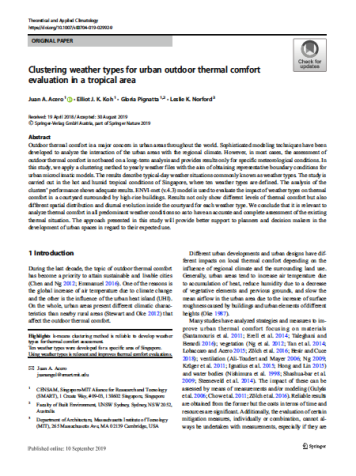
This paper applies a clustering method to yearly weather files with the aim of obtaining representative boundary conditions for urban microclimatic models. The results describe typical-day weather situations commonly known as weather types. The study is carried out in the hot and humid tropical conditions of Singapore.
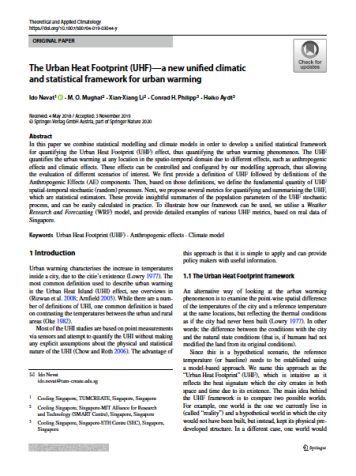
This paper combines statistical modelling and climate models in order to develop a unified statistical framework for quantifying the Urban Heat Footprint (UHF) effect, thus quantifying the urban warming phenomenon. The UHF quantifies the urban warming at any location in the spatio-temporal domain due to different effects, such as anthropogenic effects and climatic effects.
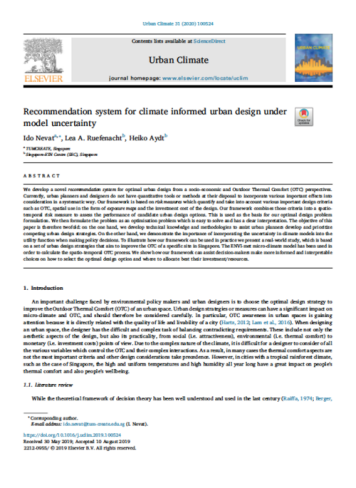
external page Recommendation system for climate informed urban design under model uncertainty
This paper shows a novel recommendation system for optimal urban design from a socio-economic and an Outdoor Thermal Comfort (OTC) perspectives. The framework is based on risk measures which quantify and take into account various important design criteria such as OTC, spatial use in the form of exposure maps and the investment cost of the design.
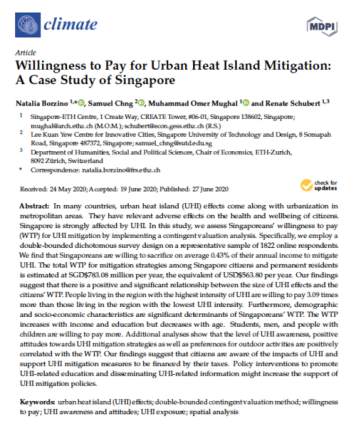
external page Willingness to pay for urban heat island mitigation: a case study of Singapore
This paper shows Singaporeans’ willingness to pay (WTP) for UHI mitigation strategies by implementing a contingent valuation analysis. Specifically, a double-bounded dichotomous survey design on a representative sample of 1,822 online respondents was applied.
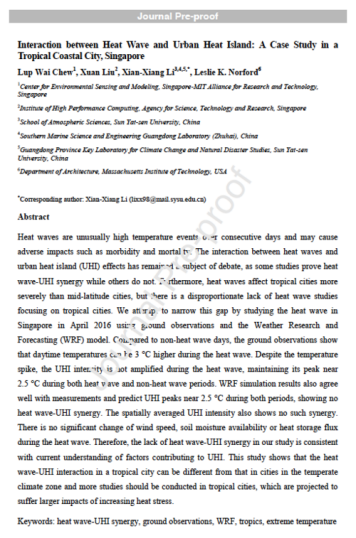
This paper studies heat waves in Singapore in April 2016 using ground observations and the Weather Research and Forecasting (WRF) model. This study shows that the heat wave-UHI interaction in a tropical city can be different from that in cities in the temperate climate zone. More studies should be conducted in tropical cities, which are projected to suffer larger impacts of increasing heat stress.
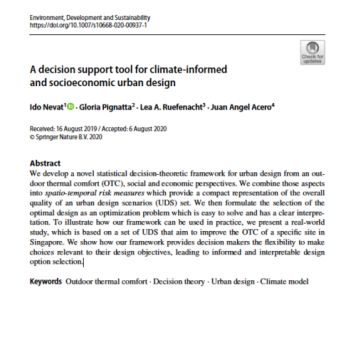
external page A decision support tool for climate-informed and socioeconomic urban design
This paper describes the development of a novel statistical decision-theoretic framework for urban design analysis from an outdoor thermal comfort (OTC), social and economic perspectives. These aspects are combined into spatio-temporal risk measures, which provide a compact representation of the overall quality of an urban design scenarios (UDS) set.
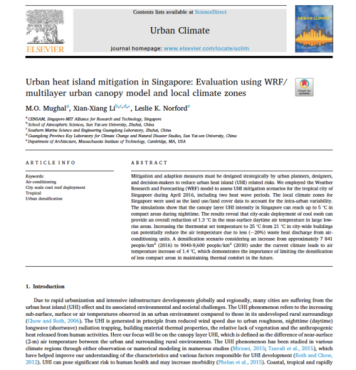
This paper describes the application of the Weather Research and Forecasting (WRF) model to assess UHI mitigation scenarios for the tropical city of Singapore during April 2016, including two heat wave periods. The local climate zones for Singapore were used as the land use/land cover data to account for the intra-urban variability.
Conference Papers
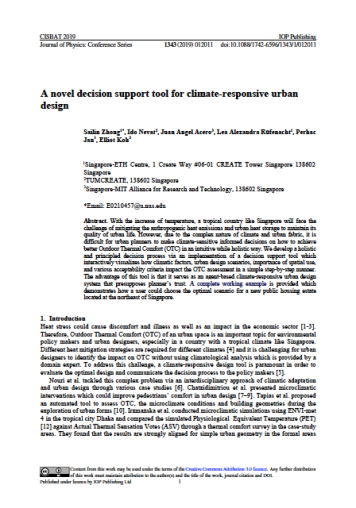
external page A novel decision support tool for climate-responsive urban design
This paper describes a holistic and principled decision process via an implementation of a decision support tool, which interactively visualises how climatic factors, urban design scenarios, importance of spatial use, and various acceptability criteria impact the OTC assessment in a simple step-by-step manner.